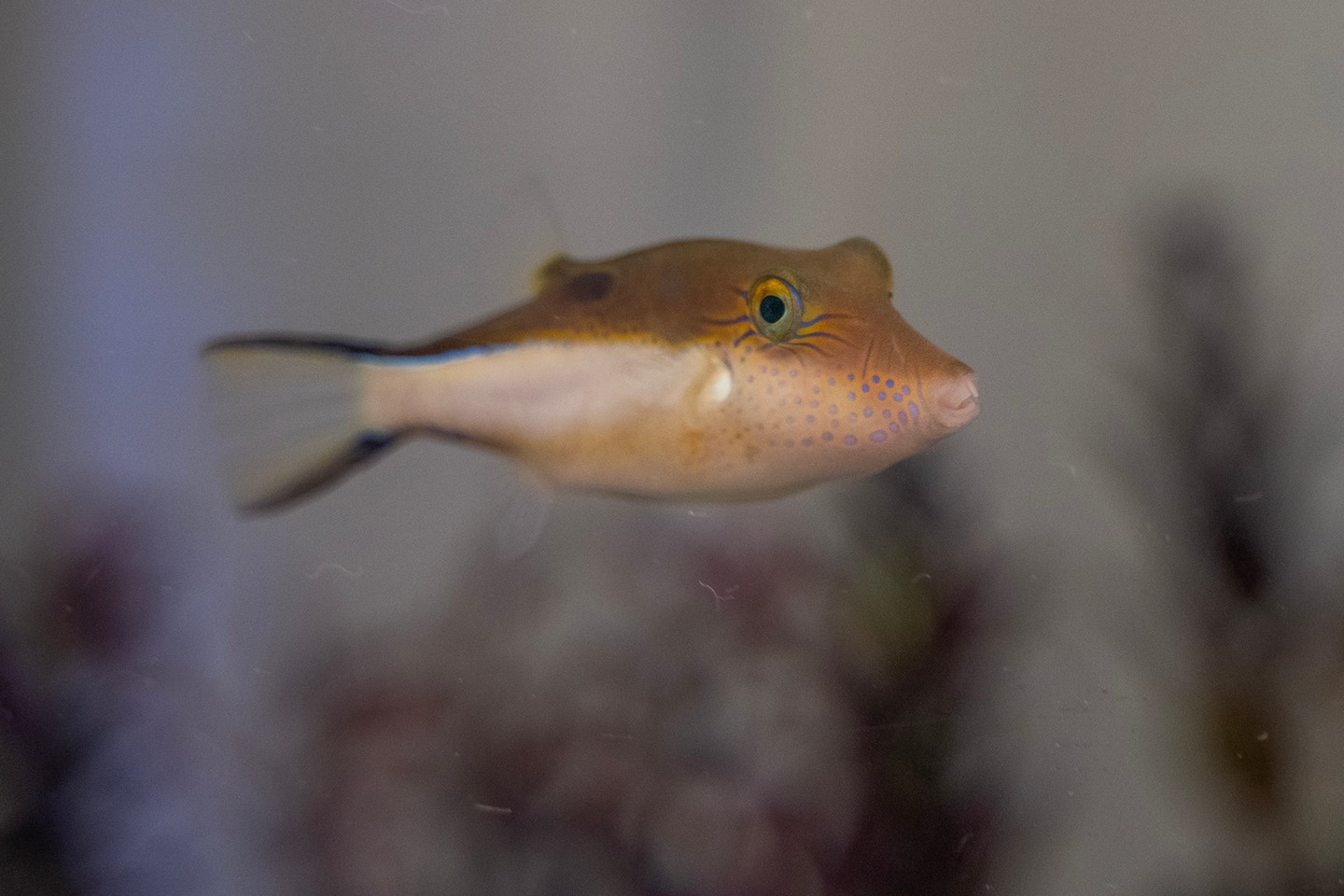- Sharpnose puffers’ physical characteristics and unique defense mechanisms.
- The ecological role and habitat preferences of sharpnose puffers in marine ecosystems.
- Modern conservation efforts and challenges facing sharpnose puffers.
- Interaction with human activities and implications for marine conservation.
- The significance of public awareness and educational outreach in protecting marine biodiversity.
Sharpnose puffers are small, intriguing creatures with distinctive physical features and defense mechanisms. Growing to about 12 cm in length, these fish have an elongated body and a pointed snout, which gives them their name. Their vibrant colors and patterns serve as both a warning to predators and a form of camouflage in their natural habitats. These puffers are part of the Tetraodontidae family, known for their ability to inflate their bodies as a defense strategy. When threatened, a sharpnose puffer can quickly ingest water or air to expand its body size. This remarkable ability makes them appear much larger, deterring many predators that find it too difficult to swallow them whole. This inflation mechanism hinges on a flexible stomach that can distend, complemented by specialized muscles and skin that support this transformation.
Ecologically, sharpnose puffers hold a crucial role in maintaining the balance of their ecosystems. These marine organisms are commonly found in tropical and subtropical ocean waters, often inhabiting coral reefs where they play a part in algae control. By munching on algae, they help prevent overgrowth on corals, maintaining the delicate equilibrium essential for coral health. Their presence in the reefs supports biodiversity, which in turn fosters robust marine ecosystems capable of supporting various life forms. Sharpnose puffers are also part of prey-predator dynamics, serving as both hunters of tiny marine invertebrates and as prey for larger fish and marine mammals. Their population health can be an indicator of the overall condition of their habitat.
Conservation of the sharpnose puffers is an ongoing effort, marked by challenges inherent in marine environments. Overfishing, habitat degradation, and pollution are primary threats compromising their survival. Marine conservation programs aim to protect these species by implementing fishing regulations, establishing marine protected areas, and promoting sustainable fishing practices. Efforts to combat coral bleaching and ocean acidification also contribute to the survival of sharpnose puffers, given their reliance on coral reefs. Though not currently listed as endangered, any significant shift in marine environments could jeopardize their populations. Conservationists continuously monitor these changes to avert irreversible damage.
Human interactions play a pivotal role in impacting sharpnose puffers, highlighting the importance of marine conservation. Coastal development, pollution, and recreational activities have altered natural habitats, leading to decreased puffer populations. Unregulated tourism can disrupt ecosystems, while pollution, especially plastic waste, poses a threat to their health and wellbeing. Effective environmental policies and diligent enforcement are needed to mitigate these risks. Education and outreach programs enhance public understanding of the impacts human activities have on marine life. In raising awareness, individuals, communities, and industries can work towards collective action in conserving marine habitats and the species within them.
Public awareness and education are paramount in promoting the conservation of marine biodiversity, including sharpnose puffers. Informing communities about the ecological importance and the threats these creatures face encourages participation in conservation efforts. Schools, aquariums, and wildlife organizations can broadcast this knowledge, linking the wellbeing of sharpnose puffers to broader environmental health. Encouraging sustainable practices and fostering a connection to marine environments can generate momentum for strategic conservation initiatives. Storytelling, workshops, and interactive experiences elevate public understanding, inspiring younger generations to partake in protecting our oceans. Through education and awareness, sharpnose puffers can continue to thrive within their natural habitats, serving as ambassadors for marine conservation.
*****
Source Description
Sharpnose puffers grow to be about 12 cm long. To defend themselves, they inflate their body with either air or water to appear much bigger. Too big for some predators to swallow!


